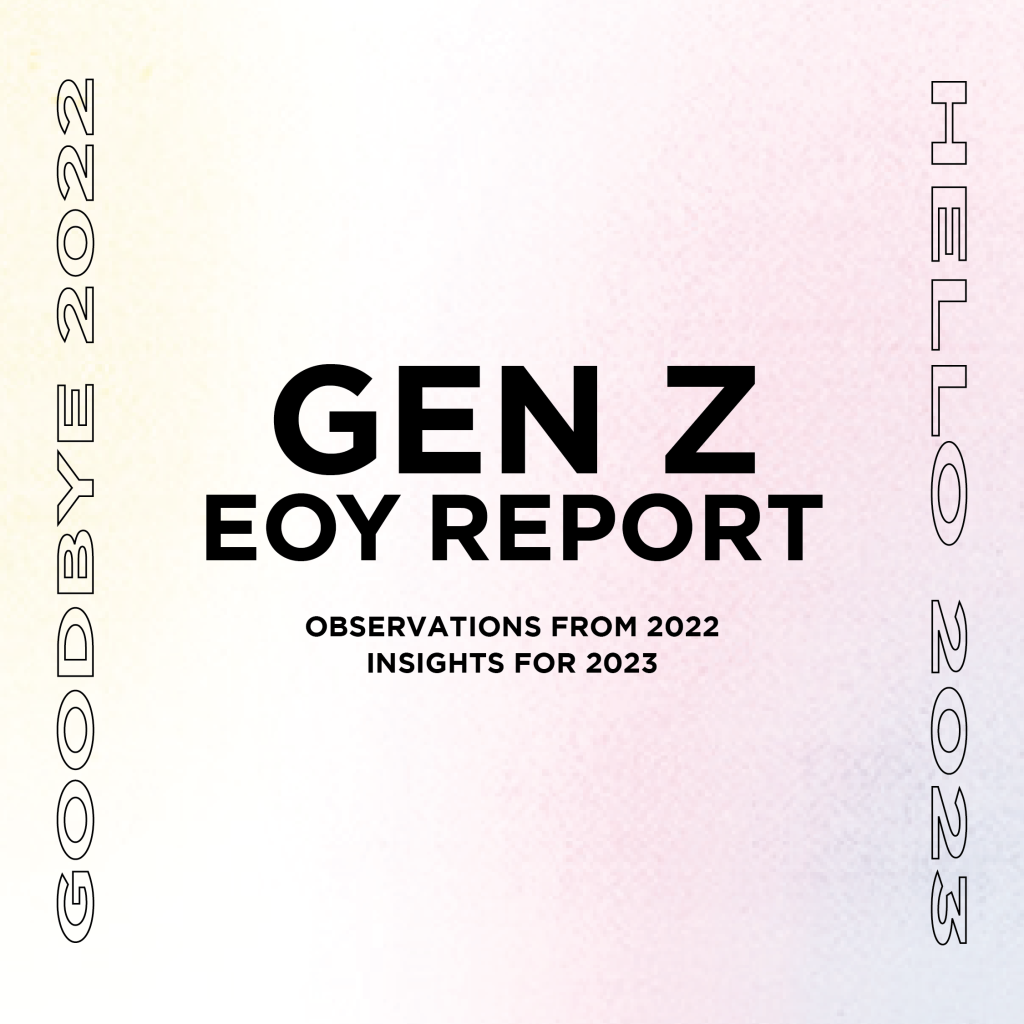We asked our group of Gen Z creators to reflect on 2022 with us. What events and trends most shaped the year? Through these conversations, we’ve developed five key insights that brands can take into 2023.
1. Chaos is the new normal
We started this year watching the Russia-Ukraine war unfold on TikTok, between thirst traps and shopping hauls. It didn’t stop there.
What we heard
Gen Z is numb to the newsfeed. Our panelists shared that instead of constantly being overwhelmed by bedlam, they’re focusing on personal events like graduating, traveling abroad, and getting jobs. Overall, they’re craving smaller, more meaningful moments.
What can brands do?
Our direction here is to celebrate the mundane. We challenge brands not to only rely on big tentpole moments without emotional payoff. Instead, look at creating emotional resonance by celebrating more relatable everyday experiences. What small moments do we take for granted?
2. With great power comes…irrelevance?
There’s a widening gap between those with excessive wealth and power – and the rest of us. This year it showed up as a backlash against celebrity private jets, to how we cut cucumbers.
What we heard
Our panelists felt like the same stars were everywhere and for the most part – everyone felt out of t ouch. They all expressed wanting to see different, unknown content creators brought into the limelight. For this generation, DEI is the new baseline, and to reach Gen Z on an emotional level means stronger value alignment between brand and talent.
What can brands do?
Gen Z can have a hard time feeling connected to celebrity, so in 2023 brands should emphasize relatability over reach. Strategies that capitalize on UGC, micro-, and nano-influencers are likely to perform well. Is it time we get brand superfans back into the spotlight?
3. Cool goes global
Historically, pop culture has originated from the western world. As the internet becomes more accessible, geographic borders matter much less. In 2022, we saw content creators reach virality from nearly every corner of the globe.
What we heard
Young people feel both under and overwhelmed by what is churning through trend cycles. Our panelists all expressed feeling bored with longer running trends like streetwear and aesthetics. In search of “new,” they’re looking overseas – literally and figuratively.
What can brands do?
Lately, some of the most exciting entertainment collaborations have been cultural and we think this could be a great strategy for brands. We challenge brands to find and understand more global trends and innovations. Be mindful of strategies that feel too North American-centric. Having a global sensibility will keep more in tune with the cultural zeitgeist.
4. Tech is on fire
Is Elon Musk the worst thing to happen to Twitter… or the best? Social media has never been more uncertain. At this point, we wouldn’t be too surprised if MySpace announced its return.
What we heard
Our panelists agreed unanimously – they don’t want brands on BeReal. This generation uses platforms like TikTok, Discord, and BeReal to connect with friends, express themselves, and share everyday moments. They liked that these spaces weren’t bombarded with ads or curated. Our group felt confident TikTok would remain popular through the next year and saw it growing as a daily diary.
What can brands do?
We urge brands to look for what the conversation is, not just where it’s taking place. Instead of taking a platform-first approach, look to aligning with passions, interests, and communities before diving deeper to discover where and how those groups are using social media. Mapping communities can be overwhelming, but luckily we’ve got a solution in the works – reach out to us to learn more.
5. We were promised a metaverse
If 2021 were the year of NFTs, 2022 was the year of the metaverse. However, we found that most conversations around the metaverse transitioned into conversations about Roblox, which isn’t quite the same thing.
What we heard
It’s no surprise that the metaverse didn’t resonate with our panelists. This generation has grown up around Roblox and other collaborative, creative games, so to this generation, it’s nothing new. Gaming is a widely used method of keeping in touch and bonding with friends. Our panelists expressed concern about brands within the metaverse space and their influence on Gen Alpha.
What can brands do?
Instead of metaverse, consider a more robust gaming strategy, specifically in collaborative worldbuilding. This gameplay style is far from new (see Sims, Fortnite, Minecraft, and even GTAV), and we expect that with the hype around metaverse, we’ll see further investment and innovation in this space.

